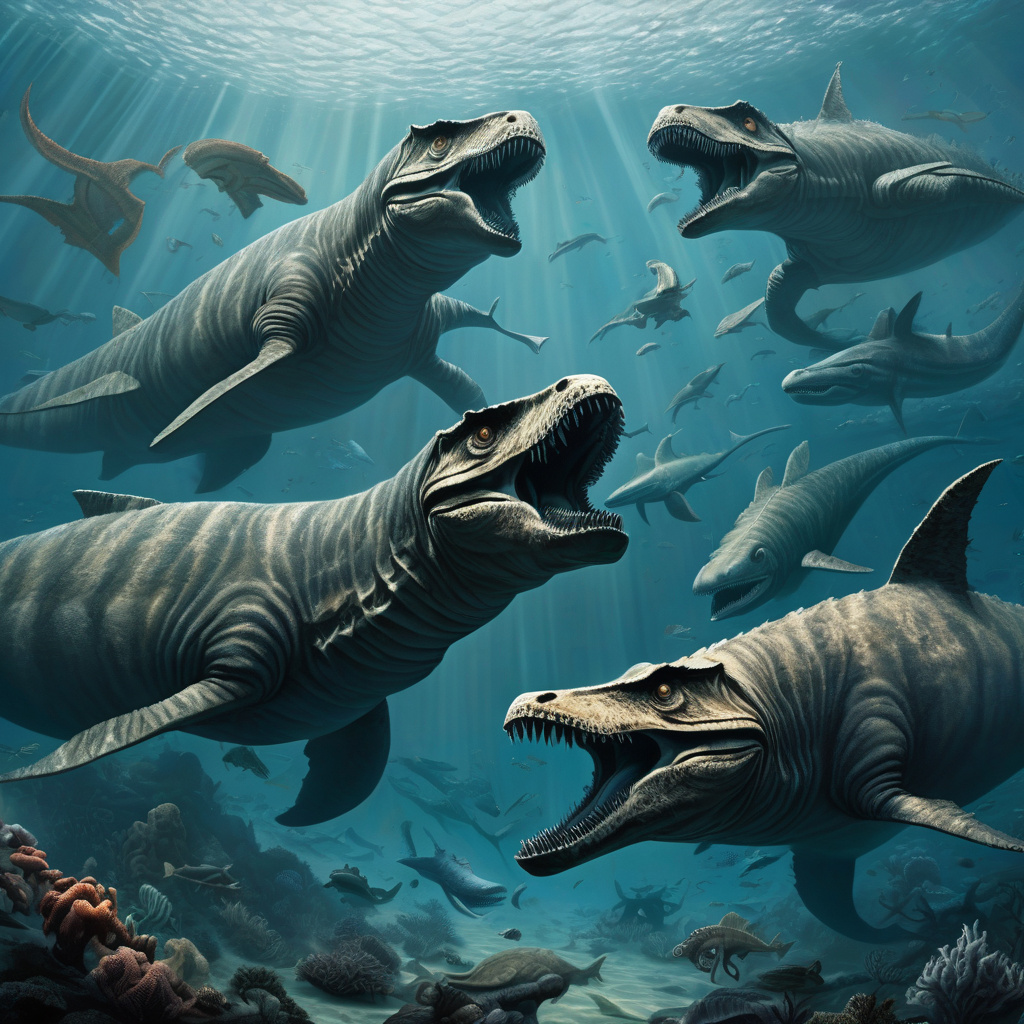Prehistoric Peril: The Extinction of Sea Monsters 94 Million Years Ago
For millions of years, the Late Jurassic and Early Cretaceous oceans belonged to enormous and awe-inspiring creatures. Plesiosaurs, ichthyosaurs, and other marine reptiles ruled the seas, showcasing a diverse range of shapes and sizes. However, around 94 million years ago, these sea monsters faced a catastrophic event that led to their eventual demise. A recent study suggests that boiling oceans and high levels of CO2 played a significant role in wiping out these magnificent creatures.
The study, conducted by a team of researchers from the UK and Germany, focused on analyzing ancient marine fossils to understand the environmental conditions that existed during the Late Jurassic and Early Cretaceous periods. By studying the chemical composition of the fossils, particularly the isotopic ratios of oxygen, the researchers were able to infer the temperature and carbon dioxide levels of the oceans during that time.
What they discovered was alarming. The researchers found evidence that the oceans during the Late Jurassic and Early Cretaceous periods were significantly warmer than previously thought. In fact, the water temperatures were so high that they approached levels that would be considered intolerable for many marine species today. This rise in temperature was likely due to massive volcanic activity that released vast amounts of CO2 into the atmosphere, leading to a greenhouse effect that heated up the planet.
The combination of boiling oceans and high CO2 levels would have had devastating effects on marine life, especially large marine reptiles like plesiosaurs and ichthyosaurs. These creatures, which had evolved to thrive in the relatively cooler waters of the Mesozoic era, would have struggled to survive in the increasingly warm and acidic oceans. Their food sources, such as fish and other marine organisms, would have also been affected by the changing environment, further contributing to the decline of the sea monsters.
While the exact timeline of events leading to the extinction of these marine reptiles is still unclear, the study provides valuable insights into the challenges they faced during the Late Jurassic and Early Cretaceous periods. It also serves as a stark reminder of the potential consequences of rapid climate change and the impact it can have on the planet’s ecosystems.
As we look to the future and grapple with the realities of climate change, studying past events like the extinction of the sea monsters 94 million years ago can offer valuable lessons. By understanding how environmental changes in the past affected ancient life forms, we can better prepare for the challenges that lie ahead and work towards mitigating the factors that threaten our planet’s biodiversity.
The study of prehistoric extinctions serves as a sobering reminder of the fragility of life on Earth and the interconnectedness of all living beings. It is up to us to learn from the past and take action to protect the diversity of life that exists on our planet today.
sea monsters, boiling oceans, CO2 levels, Late Jurassic, environmental change












